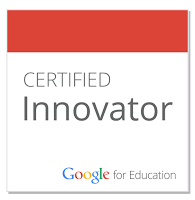Some of us are FREE from school schedules during June, July and August, in the northern hemisphere. But this same idea will work year round, whenever you are not tied to your school or work schedule.
All of us can participate in reviewing and commenting on the Common Core Science Standards, including Science and Engineering. Then if you are so inclined, you can be on the ground floor of developing classroom connections, classroom lessons, connections to English and Math standards, and finally, connections to the Social Studies standards as well.
Why is this important? Many of us have education happen to us or happen around us. However, at this time, we can be instrumental in the R&D, the research and development of how the Common Core Science Standards, including Science and Engineering, will impact our schools, our students and our lives.
I love the opening paragraph in the Framework for K-12 Science Education: Practices, Crosscutting Concepts, and Core Ideas, Reports Brief.
Just that paragraph alone should have everyone running to download the FREE pdf on their tablet, or laptop, or desktop. This should be required reading for all communities of learners because without knowledge we are powerless to make effective decisions in this changing society and information age.
The framework is the first step in a process to inform state level decisions for improving science teaching and learning across the country. As of July 2012, 45 states and 3 territories have formally adopted the Common Core State Standards. If you are interested in specifics about the Common Core check out their Frequently Asked Questions. This is a comprehensive list of the most important talking points which will be informing the next generation of informed citizens as well as talented scientists.
There are 3 dimensions involved in the Framework. Dimension 1: Scientific and Engineering Practices, Dimension 2: Crosscutting Concepts that have Common Application Across Fields and Dimension 3: Core Ideas in Four Disciplinary Areas. All of this can be accomplished by introducing our earliest readers to non-fiction and providing the building blocks of this Framework throughout their K-12 school experiences.
What pleases me the most is that “throughout grades K-12 students should have the opportunity to carry out scientific investigations and engineering design projects related to the disciplinary core ideas”. This means that our students will practice scientific problem solving throughout their school years and NOT just read about great scientific ideas and solutions. Every day I am a scientist. Every day I must solve a problem. Every day I must be creative and look for patterns in order to find a solution. No longer should our students be asked questions with one answer. Rather our students should be smart about problem solving, trial and error, data management and collaborating to find their solutions.
Check out the Framework, we should all be thinking like a scientist, everyday.
Resources:
Common Core http://www.corestandards.org/
Open College http://www.opencolleges.edu.au/informed/teacher-resources/common-core/
A Framework for K-12 Science Education http://www.nap.edu/catalog.php?record_id=13165












